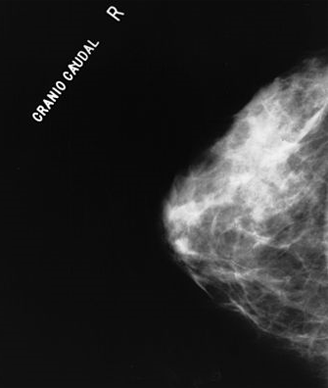MBI Boosts Cancer Detection in Patients With Dense Breasts
Adding molecular breast imaging to mammography resulted in a fourfold increase in invasive breast cancer detection rates in women with dense breasts.
Mammography alone often doesn't cut it in patients with dense breast tissue

Molecular breast imaging (MBI) in addition to mammography resulted in a better breast cancer detection rate compared with mammography alone in women with dense breasts. Adding MBI to mammography increased the overall breast cancer detection rate from 3.2 to 12 per 1,000 women screened (P < .001). The detection rate for invasive cancers increased from 1.9 to 8.8 per 1,000 patients screened (P < .001).
A total of 1,585 women, all with dense breast tissue, had a mammogram as well as MBI.
Of the tumors detected by MBI, 11 of 14 (79%) were invasive. Of those that were invasive, 82% were node-negative, representing early-stage, treatable disease. The change in detection of ductal carcinoma in situ (DCIS) was not statistically significant when MBI was added. Detection increased from 1.3 to 3.2 cases of DCIS (P = .250). These results are published in the American Journal of Roentgenology.
The results are similar to those reported in a 2011 study which showed that MBI is able to detect about three times as many cancers as mammography, said lead study author Michael K. O'Connor, PhD, professor of radiologic physics at the Mayo Clinic in Rochester, Minn. The major difference, O’Connor told Cancer Network, is that the current study used approximately one-third the dose of technetium (99mTc) sestamibi, the radioisotope used for the imaging, as the earlier study. This lower dose reflects a technological advance in MBI, allowing clinicians to use a lower dose while retaining the same image quality, said O’Connor.
The sensitivity of mammography alone was 23.8%, 81% for MBI alone, and 90.5% for the combination of both screening techniques. The difference in sensitivity between mammography alone and the combination was statistically significant (P < .001).
MBI has been shown to be useful as an additional screening method for the 40% to 50% of women with dense breast tissue as standard digital mammography does not detect breast cancers as well in these women. The current study used both the digital LumaGEM MBI system (Gamma Medica), approved as a medical device by the US Food and Drug Administration in 2011 as well as the GE Discovery NM750b system. But, O’Connor pointed out that the dose of radioisotope used in this current study are lower than those recommended in the FDA approval of these devices-4 to 8 mCi dose compared with the approved 20 to 30 mCi. ”Lower doses are essential if MBI is to be used for screening,” said O’Connor.
Adding MBI to mammography increased the recall rate by 6.6%, which is lower than previously published recall rates of 9% to 23% for adjunct MRI or ultrasound for breast cancer screening. Additionally, MBI plus mammography increased the biopsy rate by 2.9%, which compares favorably with the increase in biopsy rates for ultrasound (7.8%) and MRI (8%).
While mammography is a way to visualize the anatomy of the breast tissue, MBI is a functional analysis. “Some cancers can be difficult to detect on mammography as they are visually indistinguishable on x-ray from some types of normal breast tissue. However, functionally these cancers can be far more readily detected as their functional signature is very different from that of normal tissue,” said O’Connor.
Some academic centers, including the Mayo Clinic are offering MBI as a supplement screening. According to O’Connor, the Mayo Clinic continues to investigate how to further reduce the radiation doses used for MBI and to expand its potential applications.
“An important next step for MBI technology is a multicenter prospective randomized trial to assess comparative performance measures,” concluded the authors.